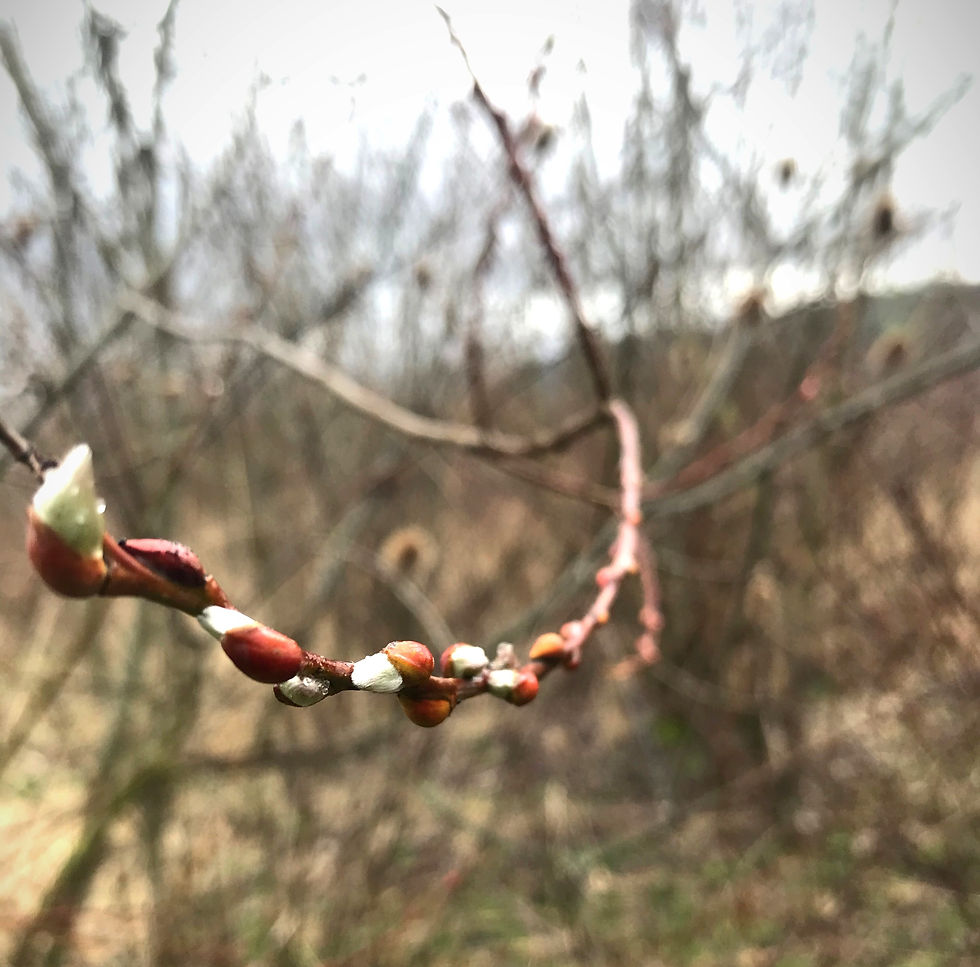Imbolc
- Kassaundra Lynn

- Feb 8, 2022
- 2 min read

Imbolc is a Celtic tradition that traditionally falls on February 1/2 (this is not exact since it reflects the climate and the shifting of seasons, so depending on where you are in the world, it could be anywhere from mid-January to mid-February). This day marks the beginning of Spring, and is halfway between the Winter Solstice and Spring Equinox.
Many people celebrate the Spring Equinox as the beginning of Spring, but this is when nature is in full swing of the season. Flowers have blossomed, birds have migrated back North, and ground animals have come out of hibernation.
Imbolc is the celebration of the very beginning, when Winter starts transitioning into Spring. Small and gradual changes are taking place. Plants are just starting to send their energy out, creating small, tight buds on trees, and little bits of green out of the earth that will soon blossom into flowers. Birds have started trickling in from the South. Ground animals are beginning to stretch out their bodies that have been kept safe and cozy throughout Winter. The air has slight shifts of crisp freshness and warmth, still mixing with the cold, frigidness of Winter. "Nature does not hurry, yet everything is accomplished." -Lao Tzu.
The name Imbolc originates from ‘i mbolg’, which translates as ‘in the belly’. This refers to livestock breeding season, particularly the pregnancy of ewes, which was one of the focal points of the celebration. The holiday was traditionally aligned with the first day of spring and the idea of rebirth. Imbolc celebrations took the form of a festival, honoring of the pagan goddess Brigid, who was evoked in fertility rites and represented poetry, crafts and prophecy. Brigid was celebrated by the Filid, a class of poets and historians among the Celts of ancient Ireland and Britain. The name Imbolc originates from ‘i mbolg’, which translates as ‘in the belly’. This refers to livestock breeding season, particularly the pregnancy of ewes, which was one of the focal points of the celebration.
Some of traditions of this holiday include cleaning your hearth/mantelpiece, or your entire house, on the eve before Feb.1. Cleaning away dirt and dust, making space for the promise of new life Spring offers. Since this is celebrated as the first day of Spring, fire is also a central part. Candles are lit, symbolizing the return of the sun, and longer hours of daylight.
In the modern world, it is easy to be swept up with the busy-ness and the want for instant gratification. Small shifts being easily overlooked, but these are the moments that build upon themselves to create the height of a season.
Although this blog is being written a week after Imbolc, it is still the beginning of Spring. Here is an invitation to go outside and take a moment to notice the small changes that have occurred. How is nature starting to wake up after a long, Winter sleep?






